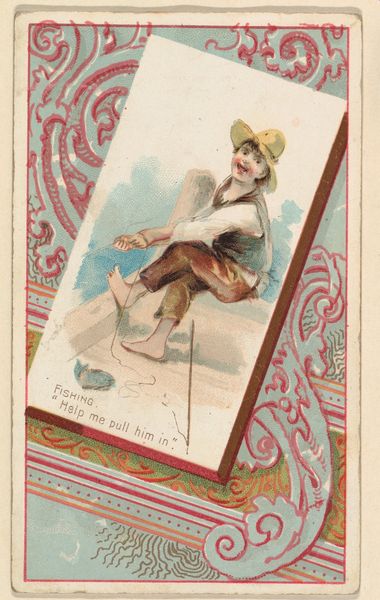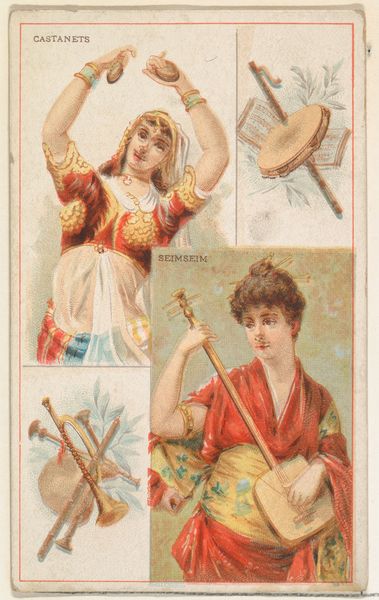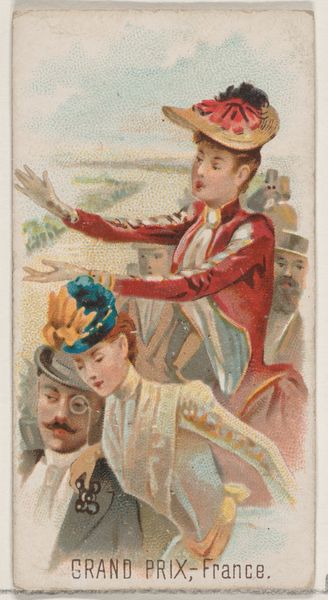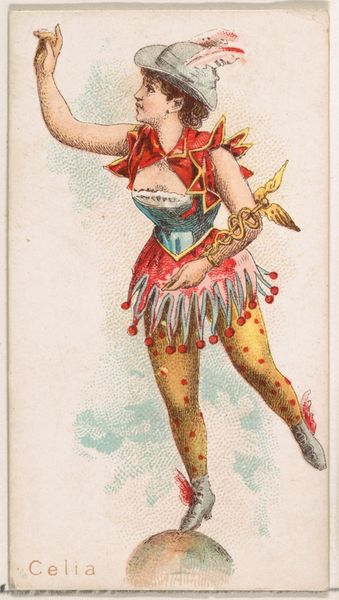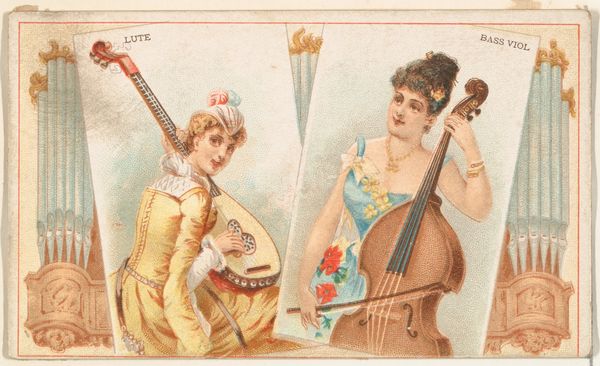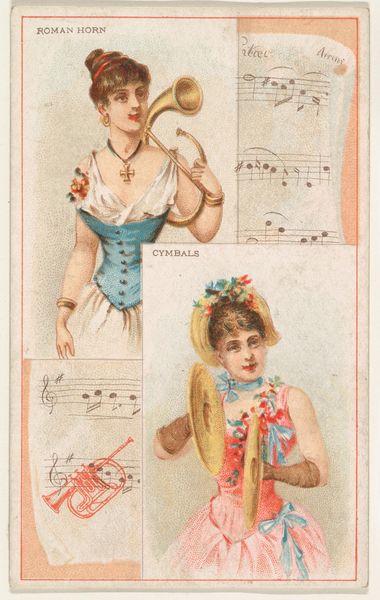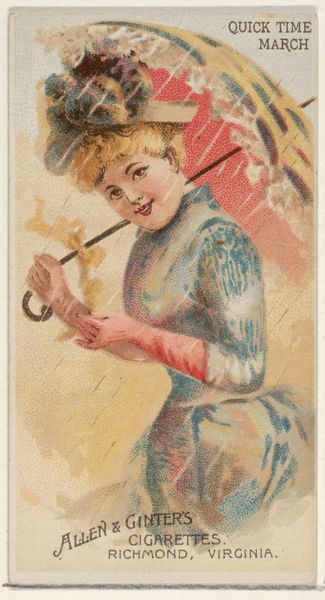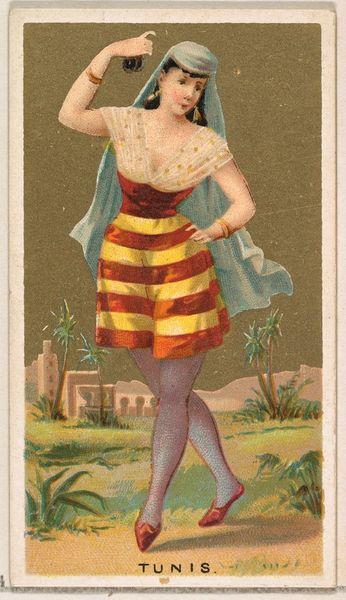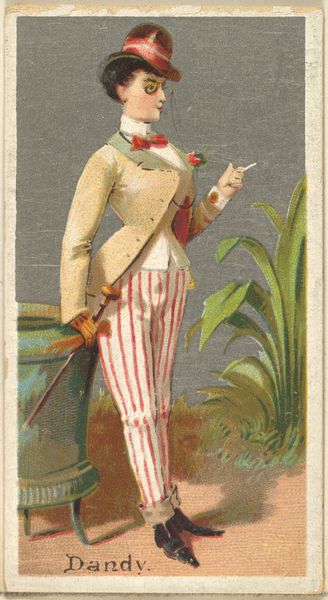
Bugle and Kettle Drum, from the Musical Instruments series (N121) issued by Duke Sons & Co. to promote Honest Long Cut Tobacco 1888
0:00
0:00
drawing, coloured-pencil, print
#
portrait
#
drawing
#
art-nouveau
#
coloured-pencil
#
water colours
# print
#
coloured pencil
#
genre-painting
Dimensions: Sheet: 4 1/16 × 2 1/2 in. (10.3 × 6.4 cm)
Copyright: Public Domain
Curator: Allow me to introduce “Bugle and Kettle Drum," a chromolithograph from 1888, part of the Musical Instruments series by W. Duke, Sons & Co. Editor: My first thought? Intriguing fragmentation. It presents four distinct vignettes with women playing instruments, yet there’s a noticeable absence of interaction between these panels. Curator: Precisely! The piece adheres to a rather rigid, almost compartmentalized structure, which serves to isolate each musical element. Note the artist's careful rendering of detail, particularly the ornate braiding on the bugler's uniform and the feathered details of the drummer’s hat. How does this calculated design function? Editor: It feels like a sanitized, idealized vision. This card, created as a tobacco insert, commodifies femininity alongside music, doesn’t it? The women, separated and framed, become part of the consumable package, reinforcing specific social roles for women. Consider too how the prints themselves were produced industrially, distributed as part of the packaging to promote "Honest Long Cut Tobacco." Curator: Indeed. The formalism reinforces this sense of controlled spectacle. The repetition of circular forms—the drums, the bugle’s bell, the tambourine—creates a visual rhythm. These rounded elements contrast with the linear precision of the text and border, and the clear graphic intent makes this so very easy to categorize. Editor: And yet, these mass-produced items gained value as collectables! The materials, inexpensive to begin with, transformed into desirable objects that reinforced brand loyalty. The act of collecting, and even trading, these cards provided value far exceeding their humble material origins and low production cost. The cards themselves tell a much more interesting story of consumer culture than the art would have you initially believe. Curator: Fascinating, and I have come to see new details and meaning through the emphasis on its production history. I confess that originally, my eye was drawn to what the image does as a representational study and compositional unity. Editor: Perspective shapes what we see, naturally. Thank you, then, for your insights into this curious, illuminating artifact of material culture.
Comments
No comments
Be the first to comment and join the conversation on the ultimate creative platform.


